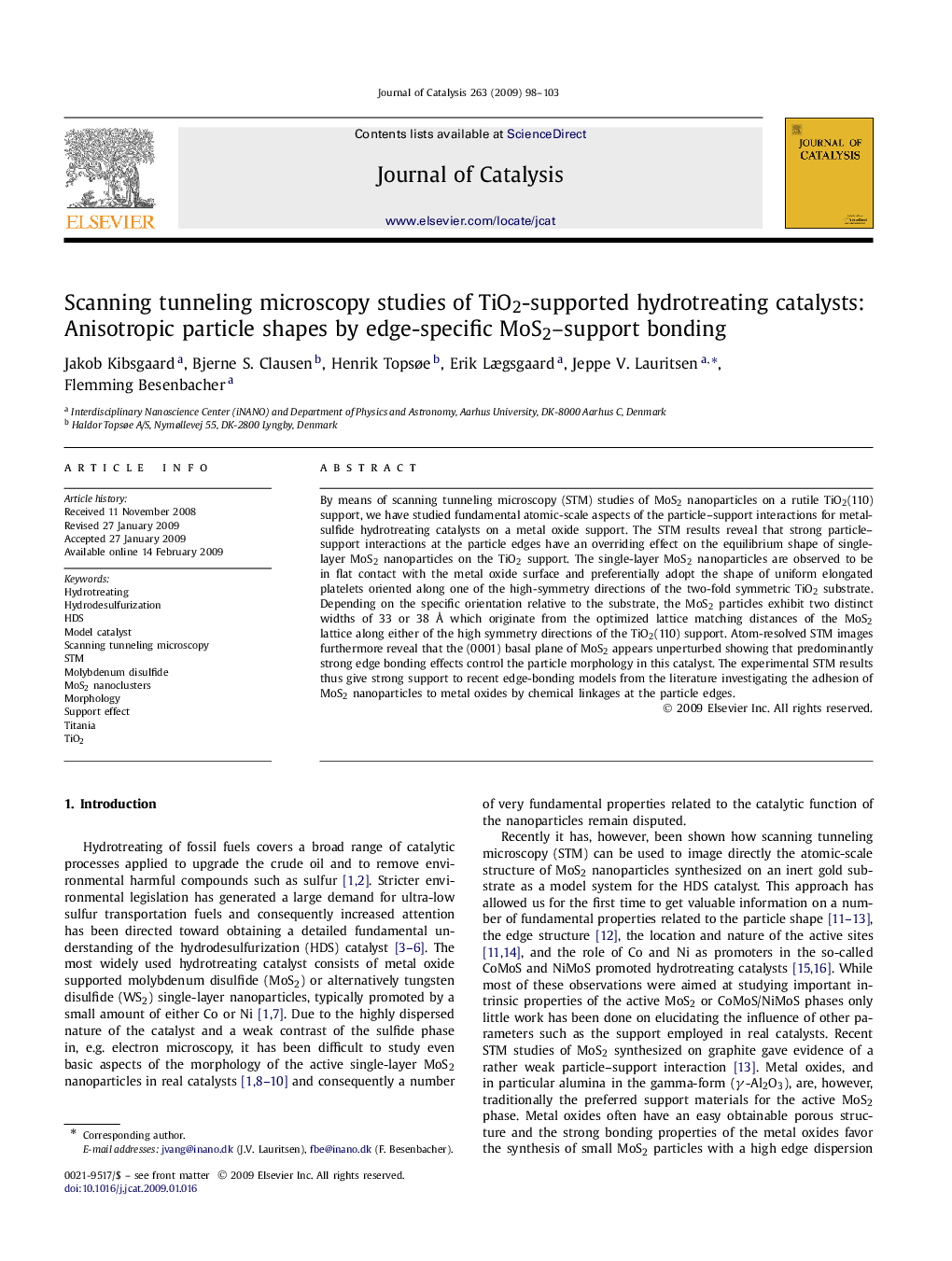| Article ID | Journal | Published Year | Pages | File Type |
|---|---|---|---|---|
| 62124 | Journal of Catalysis | 2009 | 6 Pages |
By means of scanning tunneling microscopy (STM) studies of MoS2 nanoparticles on a rutile TiO2(110) support, we have studied fundamental atomic-scale aspects of the particle–support interactions for metal-sulfide hydrotreating catalysts on a metal oxide support. The STM results reveal that strong particle–support interactions at the particle edges have an overriding effect on the equilibrium shape of single-layer MoS2 nanoparticles on the TiO2 support. The single-layer MoS2 nanoparticles are observed to be in flat contact with the metal oxide surface and preferentially adopt the shape of uniform elongated platelets oriented along one of the high-symmetry directions of the two-fold symmetric TiO2 substrate. Depending on the specific orientation relative to the substrate, the MoS2 particles exhibit two distinct widths of 33 or 38 Å which originate from the optimized lattice matching distances of the MoS2 lattice along either of the high symmetry directions of the TiO2(110) support. Atom-resolved STM images furthermore reveal that the (0001) basal plane of MoS2 appears unperturbed showing that predominantly strong edge bonding effects control the particle morphology in this catalyst. The experimental STM results thus give strong support to recent edge-bonding models from the literature investigating the adhesion of MoS2 nanoparticles to metal oxides by chemical linkages at the particle edges.
Graphical abstractUsing high-resolution scanning tunneling microscopy, the role of distinct particle–support interactions present only at the particle edges is investigated for titania-supported MoS2 nanoparticles, which are used as hydrotreating catalyst.Figure optionsDownload full-size imageDownload high-quality image (121 K)Download as PowerPoint slide
